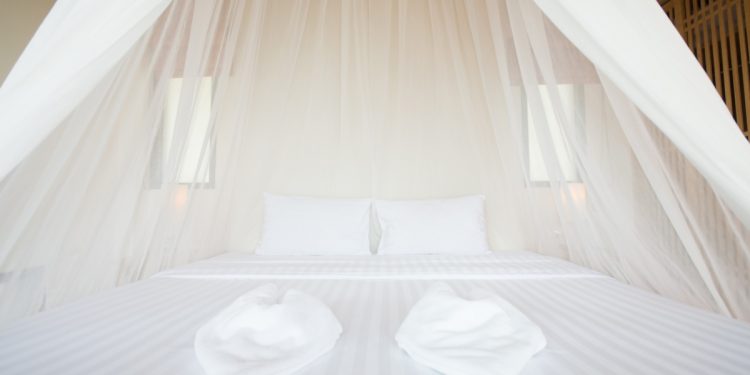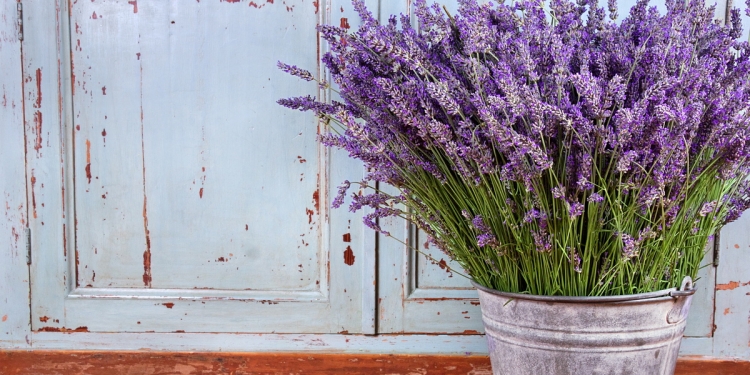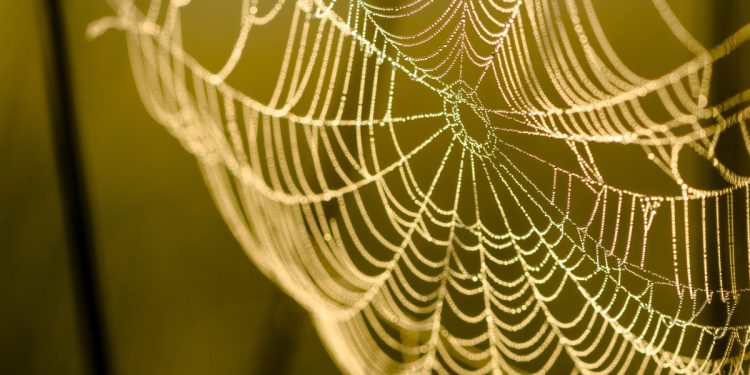Mosquitoes are present on every continent on Earth except Antarctica—and proliferate in warmer and humid climates which provide the ideal conditions for these midge-like flies to breed.
How mosquitoes feed and breed
Mosquitoes feed primarily on nectar, although females also need the nutrients from animal or human blood to produce eggs and, unlike male mosquitoes, their mouth parts can penetrate skin and draw blood from hosts.
Female mosquitoes find hosts by using their antennae which detect carbon dioxide and other organic compounds expelled when humans and animals breathe out and sweat. Studies have revealed that mosquitoes prefer some hosts over others: blood type, the bacteria on your skin, and even genetics can influence your attractiveness to female mosquitoes.
While the quantity of blood mosquitoes extract is inconsequential to the host, the saliva in mosquitoes’ mouths can carry diseases which may be passed-on, including Malaria, Yellow Fever, Chikungunya, Dengue fever, and the Zika virus. According to the US Center for Disease Control, the chances of contracting Malaria from mosquitoes in Mexico is very low, although it advises pregnant women and their partners to take special precautions due to the risk of Zika virus.
Mosquitoes by season and region in Mexico
Mosquitoes are most prevalent in Mexico between April and November, and their numbers swell during the rainy season (June to October). Sub-tropical regions in the south including the states of Chiapas, Tabasco, and Yucatán experience a higher proliferation of mosquitoes than areas further north. Mexico’s fertile coastal plains provide the ideal environment for mosquitoes to thrive, but you’ll find plenty of them in places situated at elevation too, albeit fewer the further north you are in the central highlands. Mosquito numbers decline significantly —but don’t vanish entirely— from late autumn and through the winter months and will begin to return around the middle to late half of the dry season.
Practical matters concerning mosquitoes in Mexico
Most mosquito bites in Mexico are an annoyance more than a threat: your risk of contracting a disease is very low. However, mosquito bites are not pleasant so it’s good practice to defend against them—whether you’re just here on a visit and especially if you live in Mexico or spend an extended period of time here.
Active hours
Although mosquitoes tend to be more active after dusk, female mosquitoes will bite anytime of day, especially in warmer and more humid climates.
Mosquito nets on windows and doors
An excellent way to guard your home in Mexico against mosquitoes is to install mosquito net-screens on your windows and install swinging mosquito net-screens in front of outside doors. These allow you to enjoy an air flow, keeping your indoor spaces cool and naturally refreshed, while preventing mosquitoes from entering; this is especially helpful overnight during the hotter months when a cool night breeze can help you to rest. If your windows and doors don’t have mosquito nets, close them just before sundown to prevent lots of mosquitoes from entering your home and disturbing you at night.
Bed nets
Even using window and door net-screens, some female mosquitoes will always sneak-in, hide and become active overnight in their search for blood hosts—especially during the peak summer breeding season. Whether you have mosquito nets on your windows or not, a bed net is one of the best and most effective ways to prevent your night’s sleep from being interrupted. They are especially useful over children’s beds and cots. They’re inexpensive, easy to install (simply hang from a hook in the ceiling), and the net can be folded back during the day. Bed nets are a superior solution to burning incense or using some other artificial repellents in the room while you sleep.
Prevent mosquitoes breeding around your home
Mosquitoes need water to breed and checking your home spaces for possible mosquito breeding habitats will prevent you from having to deal with a swarm in your immediate vicinity.
The most common mosquito-breeding habitats in homes are laundry and utility areas, garden ponds, unused fountains and swimming pools, and any other places on the property where water can accumulate in stagnant pools.
Make it a regular habit to overturn water buckets and bins after use (even small pools of water in the base of a bucket create a breeding opportunity); if you have an unused fountain or swimming pool, keep it clear of stagnant water; if you have a garden pond you can use certain natural plants, fish, and/or essential oils to dissuade or prevent mosquitoes from breeding there; check near drainage areas, and on any flat roofs as well as other nooks and crannies which may accumulate pools of water after it rains: mosquitoes can breed quickly, and preventing them from using your home to multiply is a good first line of defense.
Body lotion mosquito repellents
Wearing insect repellent on your skin is the most common way to prevent mosquitoes from biting you while you’re enjoying the outdoors. There are two types: the traditional synthetic repellents (usually based on DEET as the active ingredient) and repellents made using natural oils.
Repelente de insectos is readily available from local pharmacies and supermarkets across Mexico: the most common synthetic big-brand repellent on sale here is called “Off” and the alternative natural formulas made using citrus and other oils are sold under various brand names but most often include the word “Citronella” on the label. You can buy them in liquid form with a spray top, or as a lotion or cream.
Dressing against mosquitoes
It’s worth wearing long sleeve shirts, trousers and socks after dusk if you plan to spend time outside during an evening. Biting mosquitoes tend to go for places on your body with the least amount of hair, e.g. feet, ankles, legs/knees, ears, and neck.
If you are visiting or traveling through densely-foraged areas in humid regions (which includes many archaeology sites) it’s worth dressing using long sleeves and trousers as well as using a generous helping of insect repellent on exposed skin, regardless of the time of day. If you’re traversing through rural areas which are densely-wooded, or through jungle, a hat with a sewn-in mosquito net is also recommended.
Candles, incense and coils, and bug sprays
‘Citronela’ candles are available for purchase locally although their efficacy seems doubtful. Incense and coils which you light to emit smoke are also available; some claim they are suitable for indoor use, although these are probably best kept outside and used for evening garden parties, and other outdoor gatherings.
Big-brand mosquito insecticide sprays are readily available in stores and supermarkets across Mexico—they are effective, but the active ingredients are toxic to humans and other plant and wild life as well, so use them sparingly—or better, choose alternatives.
Electronic devices to deal with mosquitoes
There are three electric devices commonly used for deterring and eliminating mosquitoes.
Chemical diffuser and sound waves
Some people purchase devices which plug into an electricity socket on the wall: one type requires the continual purchase of an accompanying oil which is diffused into the room by the device; the other type emits a high-pitched frequency sound, inaudible to humans and supposedly unfriendly to mosquitoes and other insects. If you have pets, they might not appreciate these devices.
Ultra-violet light lamps
The other popular electric device is a ‘bug zapping’ lamp, that attracts flying insects using a UV lamp and electrocutes them. The debris fall onto a tray that must be cleaned out. A key issue with these is that they attract all flying insects, not just mosquitoes—and some flying insects are helpful to have around.
Simple alternative to electric devices
A hanging bed net —see above— is more effective and does not fill the room with artificial chemicals, high-frequency sound pitches which might affect sleep or hearing, and does not require you to continually clean out a tray of dead bugs (including ones that can be helpful and not just biting/stinging ones).
Marquees with mosquito screen-nets
Mexico’s agreeable climates provide ample opportunity for outdoor activities and events and if you often spend time in the garden or entertaining guests outside during the evening hours, you might consider buying a marquee and adding a mosquito netting to the sides; some marquees are sold with the mosquito netting already sewn-in; it can be rolled-up when it’s not needed.
Natural repellents and remedies
If you want to defend against mosquitoes without using a lot of synthetic/toxic chemicals, there is plenty of advice online about natural ways to deal with mosquitoes.
After-bite treatments
Most people will experience a mosquito bite and how your body reacts depends on a range of factors. Most mosquito bites create a swollen area and cause an itch; in some people the reaction can be more severe, for example, large blisters may form. If you are bitten, you can purchase Andotol gel from local pharmacies in Mexico which is an effective after-bite treatment; ask the pharmacist about other after-bite products they have in stock; some use bicarbonate of soda as the active ingredient.
Symptoms of possible disease
The odds of a disease being passed to you from a mosquito bite in Mexico are very low; notwithstanding this, if after being bitten by a mosquito you feel fever, unusually sweaty, experience back and body aches, a stiff neck, or begin vomiting seek medical advice.
Mexico in your inbox
Our free newsletter about Mexico brings you a monthly round-up of recently published stories and opportunities, as well as gems from our archives.










I understand that mosquitos thrive in hot, moist and humid climates. However, when I spent a week in a pueblito in the mountains in Oaxaca, I was persecuted by mosquitos! I guess that they were mosquitos, but I did not see them. In the US, mosquitos are very obvious. One hears them at night, when one is trying to sleep, and they can be seen. They tell me that the mosquitos in Oaxaca are very small, and not easily seen. But some insect ate me alive.
I have found that washing the bitten area with soap and water works for me. It takes away the sting almost immediately.
I always seem to be a special dish to mosquitos. I’ve heard O+ blood is their favorite. My first spring and summer in Puerto Peñasco, Sonora was last year and at first I was suffering. I always eat a lot, I mean A LOT, of onions and garlic, but that wasn’t getting it. I always heard the scent of lavander worked. I dislike flowery smells. I prefer spicy ones like vanilla, cinnamon and such but I tried it. It worked! I bought lavander oil and put it at my pulse points and places I often get bit. Not only did mosquitos keep their distance but flies tended to also (another bug that bugs me!). So give it a go. It worked for me and that’s saying something!
Thank you! Will definitely try!
I read a study where products were tested to see which would work the best against being bitten by mosquitos and the best product was PALMER’S Cocoa Butter Formula Daily Skin Therapy Body Lotion. Give that a try.
Thank you so much for this! I’m so scared of being bit and I see so much mix talk. I’m also O+ and my husband is like a natural mosquito repellent hahaha he never gets bit… I get it all. I will definitely give the lavender a try!